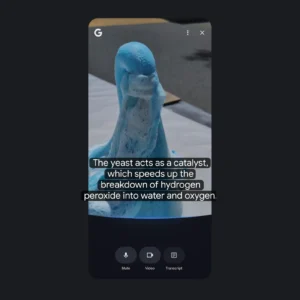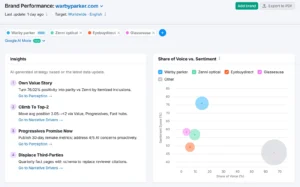Google Launches Search Live in the U.S.: Talk to Search and Use Your Camera for AI-Powered Answers
Google has officially rolled out Search Live in the U.S., allowing users to interact with Search using both voice and live camera input for AI-generated answers in real time. Previously limited to Google Labs, this feature is now fully integrated into the Google app for Android and iOS.
Key Features
-
Live Interaction: Tap the Live icon in the Google app to start a session.
-
Natural Conversation: Ask questions out loud, just like talking to a person.
-
Camera Input: Optionally share your camera feed so Search can interpret what you’re seeing in real time.
-
AI-Powered Answers: Receive contextual AI responses instantly.
-
Source Citations: Answers come with references displayed directly on-screen.
What’s New
During the Labs phase, Search Live only supported voice input (“talk-and-listen” mode). The public release now adds camera support, letting users combine voice and visual context for richer, real-time information.
Example Use Case
In a store, you can point your camera at a product, ask, “What are the reviews for this?” and instantly get AI-generated insights with references—all on your screen.
Google has also shared a demo video showing how Search Live works seamlessly with both voice and camera inputs.

Why You Should Care
Search Live marks another major step in Google’s evolution from traditional, typed queries to real-time, conversational search experiences. For everyday users, it offers a faster, more natural way to get answers through voice and camera input.
But for SEOs and publishers, the implications are far more significant:
-
Fewer clicks: Spoken, on-screen AI answers may further reduce organic traffic as users get what they need without visiting websites.
-
Citations still matter: Google continues to display source links beneath AI answers, offering some visibility opportunities — though users’ motivation to click may be limited.
-
Changing search behavior: As users begin treating Google more like an assistant that “sees” and “hears”, keyword strategies must evolve toward context-rich, conversational, and multimodal queries.
What You Can Do
The U.S. rollout of Search Live reinforces one key point: the way people search is changing — fast. To stay ahead, consider these strategies:
-
Optimize for conversational queries.
Focus on natural, spoken-style questions that align with how users talk rather than type. -
Add visual context.
Include structured data, high-quality product images, and multimodal content that helps your brand appear when users search with their cameras. -
Track visibility shifts.
Monitor impressions, rankings, and AI-generated citations to see how your content surfaces within these new search experiences.
How Semrush’s AI SEO Toolkit Helps
The Semrush AI SEO Toolkit provides insights into how your brand performs within AI-driven search results, including:
-
AI visibility reports — See whether your content is being cited in LLMs and AI-powered platforms.
-
Competitive benchmarking — Compare your share of voice, sentiment, and visibility against competitors in emerging AI search ecosystems.

Search Live and other AI-driven search experiences are evolving fast. Start tracking your performance now so you’re prepared to adapt as these features expand globally and redefine how people discover information online.